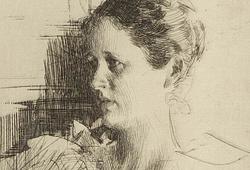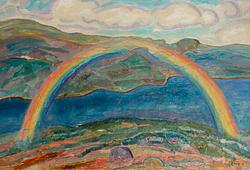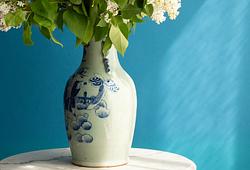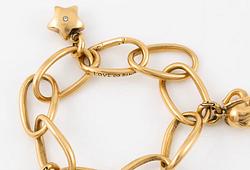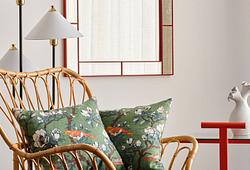VAS, porslin. Transition, 1600-tal.
Guform med dekor i wucaifärger av figurscen föreställande kejsare omgiven av hovdamer. Höjd 52,5 cm.
Restaurerad.
Proveniens
Purchased from Sworders Fine Art Auctioneers, November 2004.
The Avalon Collection Part II.
This collection, which in the main focuses on the Interregnum and Kangxi periods has been both carefully and sensitively formed over the last twenty-five years. The collector, a member of the English Oriental Ceramic Society, has assembled the collection with an eye for provenance whilst purchasing from old European collections, well-established antique dealers and at auction.
Academically, the pieces have been well researched both in terms of their symbolism and narrative themes. In many instances the imagery on the pieces has been referenced to episodes in the romantic and historic novels of Chinese mythology, which were used extensively in the decoration of seventeenth century Chinese porcelain.
Utställningar
For a baluster vase with a similar scene see “The Wrestling Boys: An exhibition of Chinese and Japanese ceramics from the 16th to 18th century in the collection at Burghley House” by G Lang, No 1.
Litteratur
It is interesting that the painting clearly displays the man with his left arm around the shoulders of the younger woman and it is quite possible that this may be an episode from the tragedy of Yang Guifei (719-756), who was the favourite concubine of the Tang emperor Ming Hueng (685-762).
Musical instruments were considered to symbolize matrimonial harmony and the mutual affection existing between a man and his wife. Related depictions of women playing instruments appear in the Wanli edition of the “Pipaji – The Story of the Lute” – an opera story by Gau Ming (1305-70). It is therefore possible that the painter may have used a woodcut illustration relating to the same story for the decoration on this vase.







